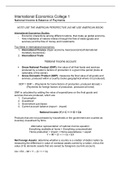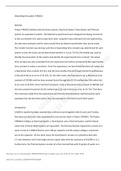Samenvatting
Samenvatting International Economics (MAN-BCU2021)
Samenvattingen van het vak International Economics van de studie Economics and Business Economics. Bevat alle benodigde stof en de theorieën en modellen uit de colleges. Modellen zijn uitgewerkt op een manier die zullen helpen met het beantwoorden van tentamen vragen.
[Meer zien]













